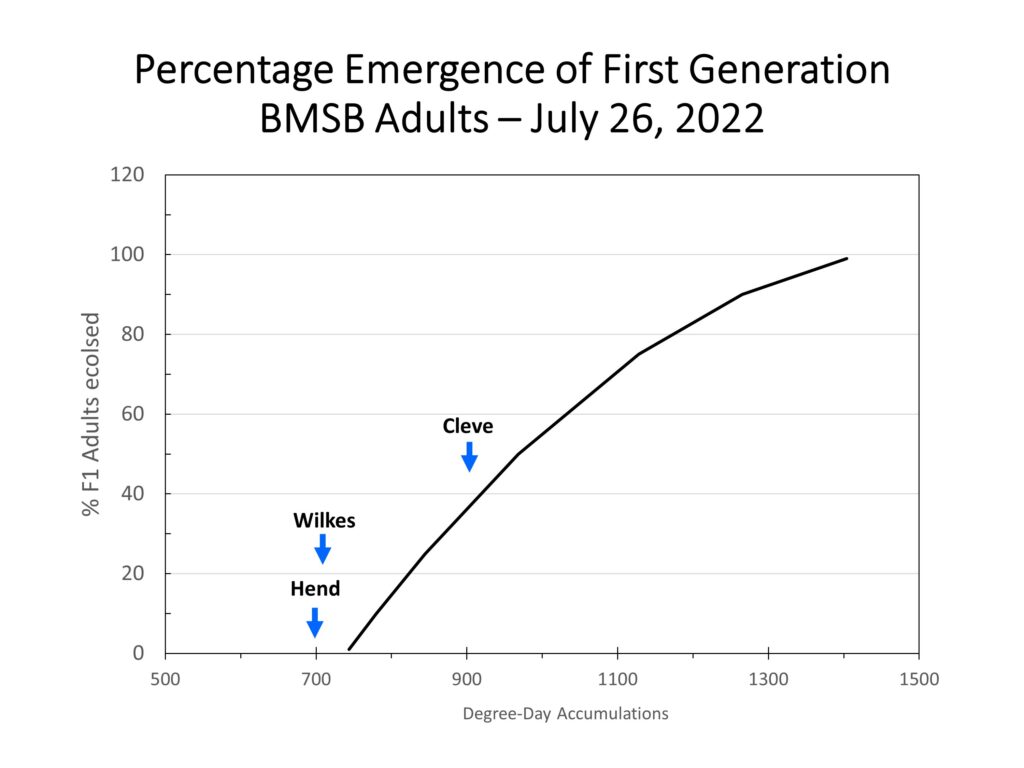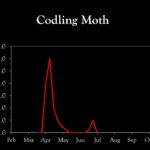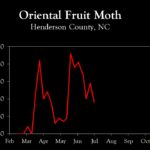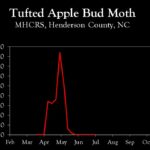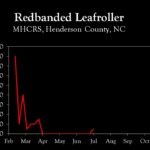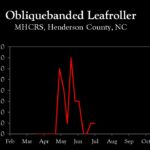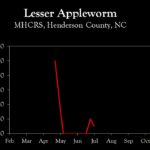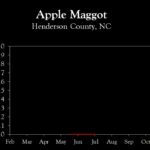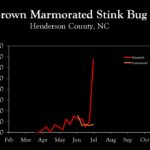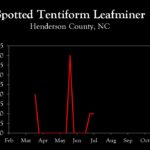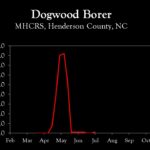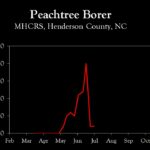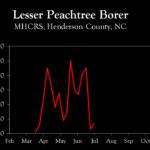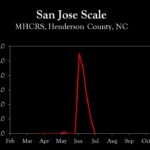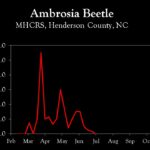WNC Orchard Insect Pest Populations – July 26, 2022
go.ncsu.edu/readext?876801
en Español / em Português
El inglés es el idioma de control de esta página. En la medida en que haya algún conflicto entre la traducción al inglés y la traducción, el inglés prevalece.
Al hacer clic en el enlace de traducción se activa un servicio de traducción gratuito para convertir la página al español. Al igual que con cualquier traducción por Internet, la conversión no es sensible al contexto y puede que no traduzca el texto en su significado original. NC State Extension no garantiza la exactitud del texto traducido. Por favor, tenga en cuenta que algunas aplicaciones y/o servicios pueden no funcionar como se espera cuando se traducen.
Português
Inglês é o idioma de controle desta página. Na medida que haja algum conflito entre o texto original em Inglês e a tradução, o Inglês prevalece.
Ao clicar no link de tradução, um serviço gratuito de tradução será ativado para converter a página para o Português. Como em qualquer tradução pela internet, a conversão não é sensivel ao contexto e pode não ocorrer a tradução para o significado orginal. O serviço de Extensão da Carolina do Norte (NC State Extension) não garante a exatidão do texto traduzido. Por favor, observe que algumas funções ou serviços podem não funcionar como esperado após a tradução.
English
English is the controlling language of this page. To the extent there is any conflict between the English text and the translation, English controls.
Clicking on the translation link activates a free translation service to convert the page to Spanish. As with any Internet translation, the conversion is not context-sensitive and may not translate the text to its original meaning. NC State Extension does not guarantee the accuracy of the translated text. Please note that some applications and/or services may not function as expected when translated.
Collapse ▲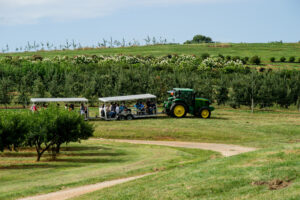 We are approaching the end of second generation codling moth in Henderson County and similar elevations, with egg hatch about 65% complete. Unless there is evidence of problems to date (i.e., some fruit damage or high pheromone trap captures), there is a low potential for damage from this point forward. In Cleveland County and similarly low elevations, the second generation has completed development. While third generation activity is not uncommon in lower elevations, the need for insecticidal control is rare unless population pressure has been high, in which case there would be some evidence of damaged fruit at this time.
We are approaching the end of second generation codling moth in Henderson County and similar elevations, with egg hatch about 65% complete. Unless there is evidence of problems to date (i.e., some fruit damage or high pheromone trap captures), there is a low potential for damage from this point forward. In Cleveland County and similarly low elevations, the second generation has completed development. While third generation activity is not uncommon in lower elevations, the need for insecticidal control is rare unless population pressure has been high, in which case there would be some evidence of damaged fruit at this time.
The only other insect of potential concern at this time is brown marmorated stink bug, primarily in lower elevation orchards. Model predictions shown below indicate that approximate emergence of first generation adults is almost 40% complete in lower elevations (Cleveland Co.), but has not yet begun in higher elevations such as Henderson and Wilkes Counties. If a pyrethroid insecticide recommended for BMSB has not been applied to susceptible cultivars in lower elevation orchards, one should be considered at this time. Insecticidal control should not be necessary in Wilkes or Henderson County for another couple of weeks, the exception being Granny Smith apples (as discussed last week).
We have still not captured apple maggot flies at either the Mills River research station or at our abandoned site in Henderson County. In recent years apple maggot activity has not begun until the second or third week of August.
2022 Apple Field Day
Finally, remember that Apple Field Day will be held at 4:00 p.m. this Thursday, July 28, at the Mountain Horticultural Crops Research and Extension Center in Mills River. There are many good presentations scheduled and admission is free!
Learn more about southeastern apple insect pests at the Apple Insect Management page.
2022 Average Weekly Trap Captures
| HENDERSON COUNTY | |||
| Insects per trap | |||
| Jul 11 | Jul 18 | Jul 25 | |
| Codling moth | 0.5 | 2.0 | 0.0 |
| Oriental fruit moth | 10.0 | 14.5 | 9.0 |
| Tufted apple bud moth | 0.0 | 0.0 | 0.0 |
| Redbanded leafroller | 0.0 | 0.0 | 1.0 |
| Obliquebanded leafroller | 0.0 | 1.0 | 1.0 |
| Lesser appleworm | 0.0 | 2.0 | 1.0 |
| Apple maggot (abandoned and research orchards) | 0.0 | 0.0 | 0.0 |
| Brown marmorated stink bug (commercial) | 1.5 | 1.3 | 1.5 |
| Brown marmorated stink bug (unsprayed) | 1.0 | 2.0 | 13.5 |
| Spotted tentiform leafminer | 0.0 | 1.0 | 0.0 |
| Dogwood borer | 1.0 | 0.0 | 1.0 |
| Peachtree borer | 20.0 | 2.0 | 2.0 |
| Lesser peachtree borer | 45.0 | 3.0 | 7.0 |
| San Jose scale | 12.5 | 5.0 | 0.0 |
| Ambrosia beetle (all species) | 0.5 | 0.3 | 0.0 |
*Note that these averages illustrate only the timing of insect emergence and fluctuations in populations, and are not representative of population levels in any given orchard. The only way to have an accurate assessment of an individual orchard’s populations is to set up traps in that orchard.
2022 Accumulated Degree Days
| HENDERSON COUNTY | ||||
| Jul 11 | Jul 18 | Jul 25 | ||
| Codling moth (Biofix: April 22) | 1478 | 1643 | 1821 | |
| Oriental fruit moth (Biofix: April 12) | 1963 | 2163 | 2371 | |
| Tufted apple bud moth (Biofix: April 27) | 1766 | 1965 | 2173 | |



